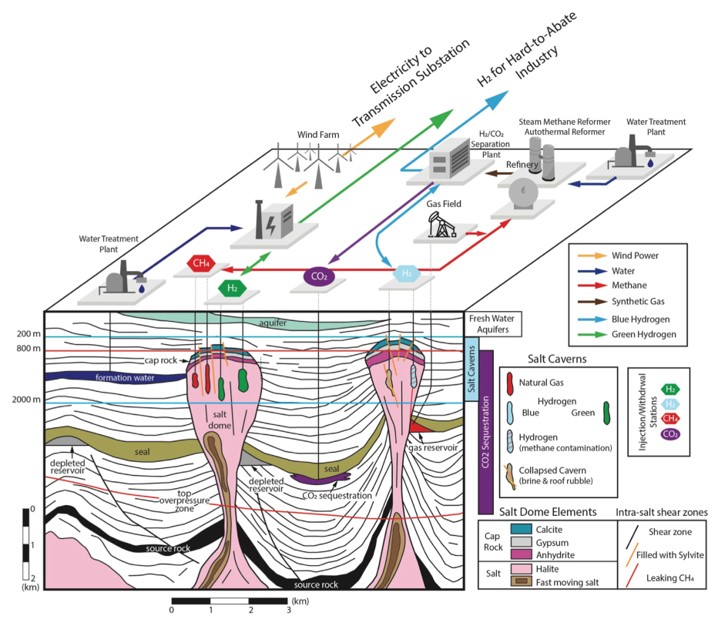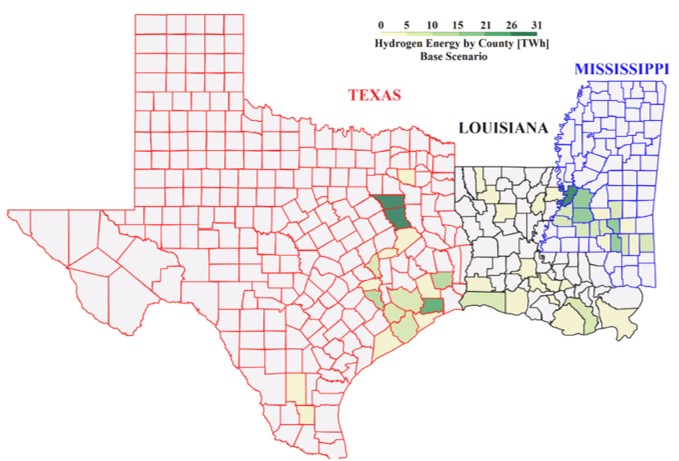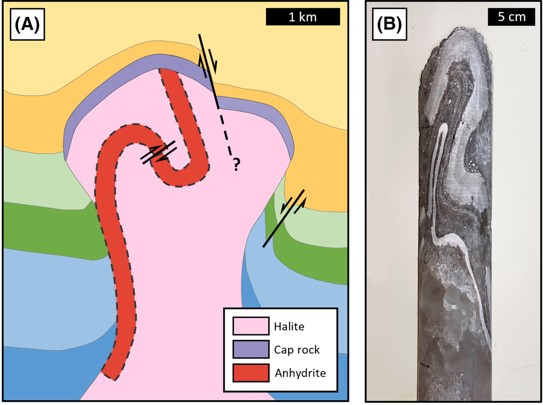Hydrogen Initiatives

Emerging Hydrogen Economy
The shift in energy consumption from fossil-based fuels to renewable energy is reshaping the fabric of our energy systems. Hydrogen, a known energy carrier, can be used to help society bridge the gap between fossil fuels and renewable energies.
A viable H2 economy requires the development of several functional elements across the value chain including geological storage (Lin et al., 2024). Salt caverns can be used as a viable option to store H2. STARR researchers, in collaboration with our colleagues from the GeoH2 Industrial Affiliates Program at BEG, have developed an application that allows to calculate H2 storage capacities in salt caverns. The application is a screening tool that considers realistic subsurface conditions and the thermodynamic properties of H2 (Ruiz Maraggi and Moscardelli, 2023).

Hydrogen Storage in the Gulf Coast
Today, salt caverns are considered the best option for underground H2 storage due to their large storage capacity, their sealing integrity, and their flexible operation with large injection and withdrawal rates.
STARR researchers deployed the GeoH2 application to calculate H2 storage capacities in salt domes without existing caverns along the Gulf Coast (Ruiz Maraggi and Moscardelli, 2024). Different input parameters can be upload to the GeoH2 application to calculate these values at screening level .

Salt Formation Heterogeneity
Salt formations are not 100% homogeneously composed of halite. Heterogeneities can be present multiscale, from kilometer-scale shear zones inside salt domes to centimeter-scale deformation at core scale.
STARR researchers have been documenting these heterogeneities using a variety of geophysical and geological datasets, including seismic reflection volumes and core samples (Schuba and Moscardelli, 2023).


